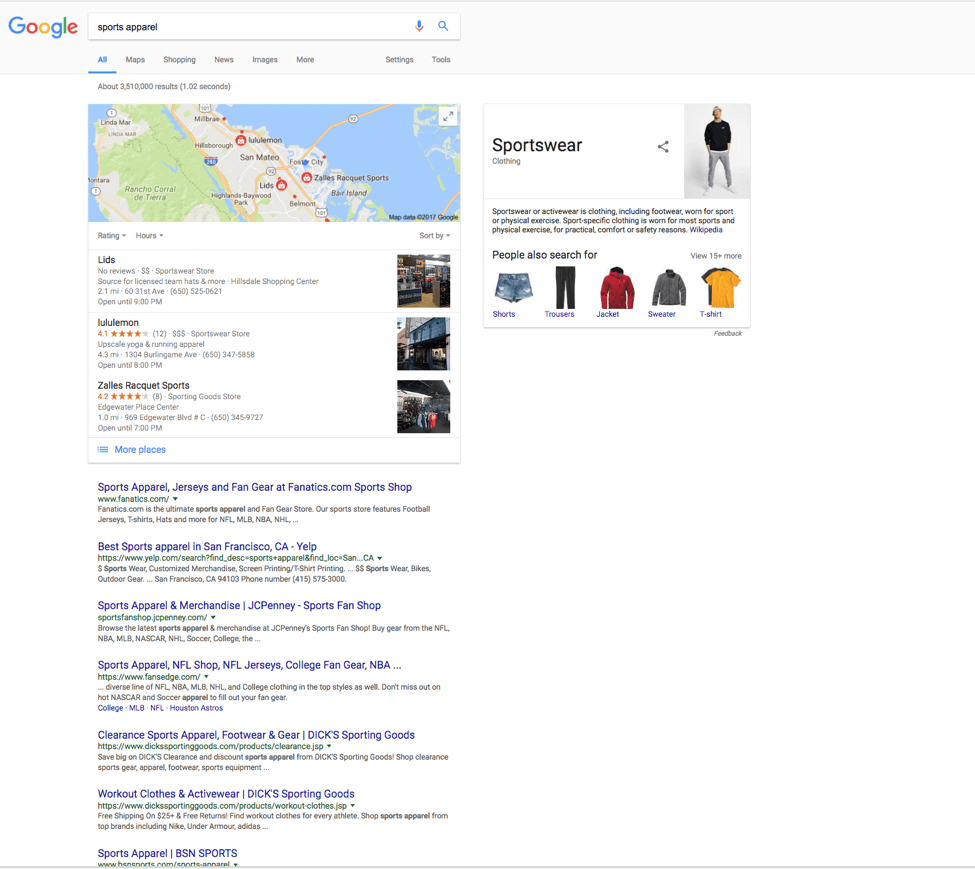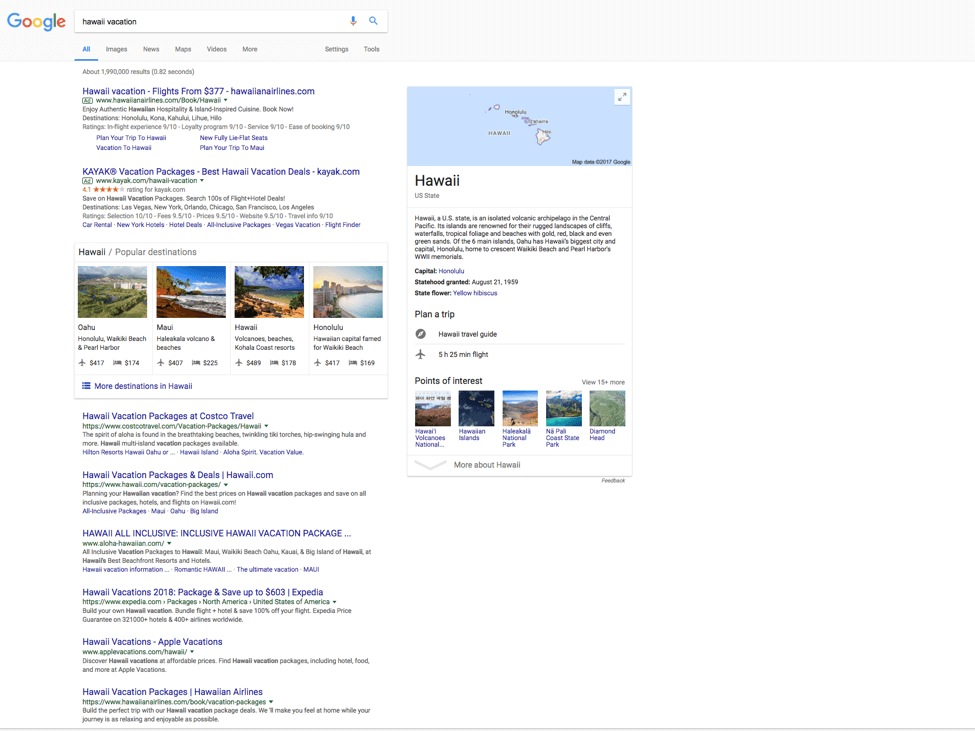The changing SERP: Understanding and adapting to dynamic search results
Search results have become more personalized and dynamic over the years, creating a more challenging SEO environment for search and content marketers. But columnist Jim Yu shows how these changes can create opportunities for those willing to do the work.

Consumer search behaviors are changing rapidly. According to a recent report from BrightEdge (disclaimer: my employer), 57 percent of searches now begin with a mobile device, and last year Google revealed that voice search has increased to about 20 percent of all Google mobile search queries.
And of course, Google is constantly adjusting their SERP layout in order to better align with a searcher’s context and expectations. Consumers now expect to see rich content in SERPs that includes not just standard text listings, but video, images, local map results, featured snippets and more. The standard organic listings themselves also sometimes feature rich snippets, which enhance the listing by presenting information in a way that is easy to scan and often visually appealing.
Paid search ads have changed as well — in 2015, Google doubled the size of its highly visual product listing ads (PLAs), and last year they announced that up to four search ads could appear for “highly commercial queries,” whereas previously the maximum had been three. Even if you aren’t involved in paid search, it’s important to keep track of any changes that impact the overall SERP layout and design, as these changes may affect the way users engage with organic listings.
These seismic shifts in the industry have a profound impact on SEO. Although my company has observed that the overall share of organic traffic for websites remains the same as it was in 2014 (51 percent of all incoming traffic, on average), this stability didn’t come easily — and it will become harder to defend this level of organic traffic contribution. Marketers now need to consider how content is evaluated and displayed on a variety of devices so they can attract more clicks from the right search user at the right time.
How have these shifts impacted SEO?
The shift from the classic “10 blue links” SERP of the old days to the more dynamic and visually appealing SERPs of today has had a huge impact on how SEO practitioners do their jobs. In the old days, you would create text content for a webpage with the aim of having it rank well in the SERP for your chosen keyword. Now, you must take into account how different content types will rank in different sections of the SERP on different devices and for users in different locations. Ideally, you will also consider how to present or mark up this content so that you can make the most of your listings with visual enhancements like rich snippets.
For example, let’s say that you manage a website for a business that sells cameras, and on that site is a page about SLR cameras. Many years ago, when the SERP showed just 10 blue links, you would seek to maximize organic search performance by creating high-quality, authoritative text content about SLR cameras. If you were really advanced, you would optimize this one piece of content across three devices (desktop, mobile and tablet) — three permutations in total.
[newsletter-form id=’6741’ text=’Keep up with all the developments in SEO and beyond!’]
Fast forward to today. You still have your camera website and your webpage about SLR cameras. However, terms related to SLR cameras now bring up a variety of different result types, depending on the keyword variation. You decide that in addition to your existing text content about SLR cameras, you want to create other types of content to capture different areas of the SERP: high-quality product images (for image results), a video about SLR cameras (for video results), information on your local storefront (for the local 3-pack), and a question-and-answer section (for a featured snippet).
Each of these four content elements, in addition to your standard text content, could win a spot on SERP for the same keywords you were targeting and ranking for years ago. Suddenly, you need to deal with five content types across three devices — 15 permutations in total. That’s a lot more content to produce, optimize and track in order to maximize organic search performance.
Add to this the fact that ads are getting larger and more numerous — thereby reducing above-the-fold visibility for organic listings — and you can see how SEO has become an increasingly challenging endeavor over the years.
How can SEOs better focus their efforts?
Unless you work at a large company with unlimited resources, you’re going to have to make some tough choices about where to focus your SEO and content marketing efforts.
One way to inform this decision is to examine what content type is most likely to win the top spot on the SERP for your most important target keywords. For instance, “sports apparel” will likely to have local 3-pack above organic web listings, while “hawaii vacation” has more PPC results occupying top SERP positions.
This type of visual parsing is going to be a key way for search marketers to sustain and improve their organic search performance because Google is never going to show a one-size-fits-all SERP anymore. Marketers will need to analyze the ranking position of every content element on SERPs for their target keywords. They will also need to understand intent signals to see if a keyword produces SERPs with local results — or with any organic listings above the fold at all.
Conclusion
Search engine optimization has grown more challenging and complex over the years, and marketers must now look beyond pure ranking position on the SERP if they want to succeed. By closely examining SERPs to discover the types of content present, where each content type is displayed/positioned, and how much real estate each content piece occupies on the SERP for the keywords they want to be known for, marketers can better manage their SEO and content development efforts by focusing on areas that will have the greatest impact on organic search visibility.
Contributing authors are invited to create content for Search Engine Land and are chosen for their expertise and contribution to the search community. Our contributors work under the oversight of the editorial staff and contributions are checked for quality and relevance to our readers. The opinions they express are their own.
Related stories
New on Search Engine Land

